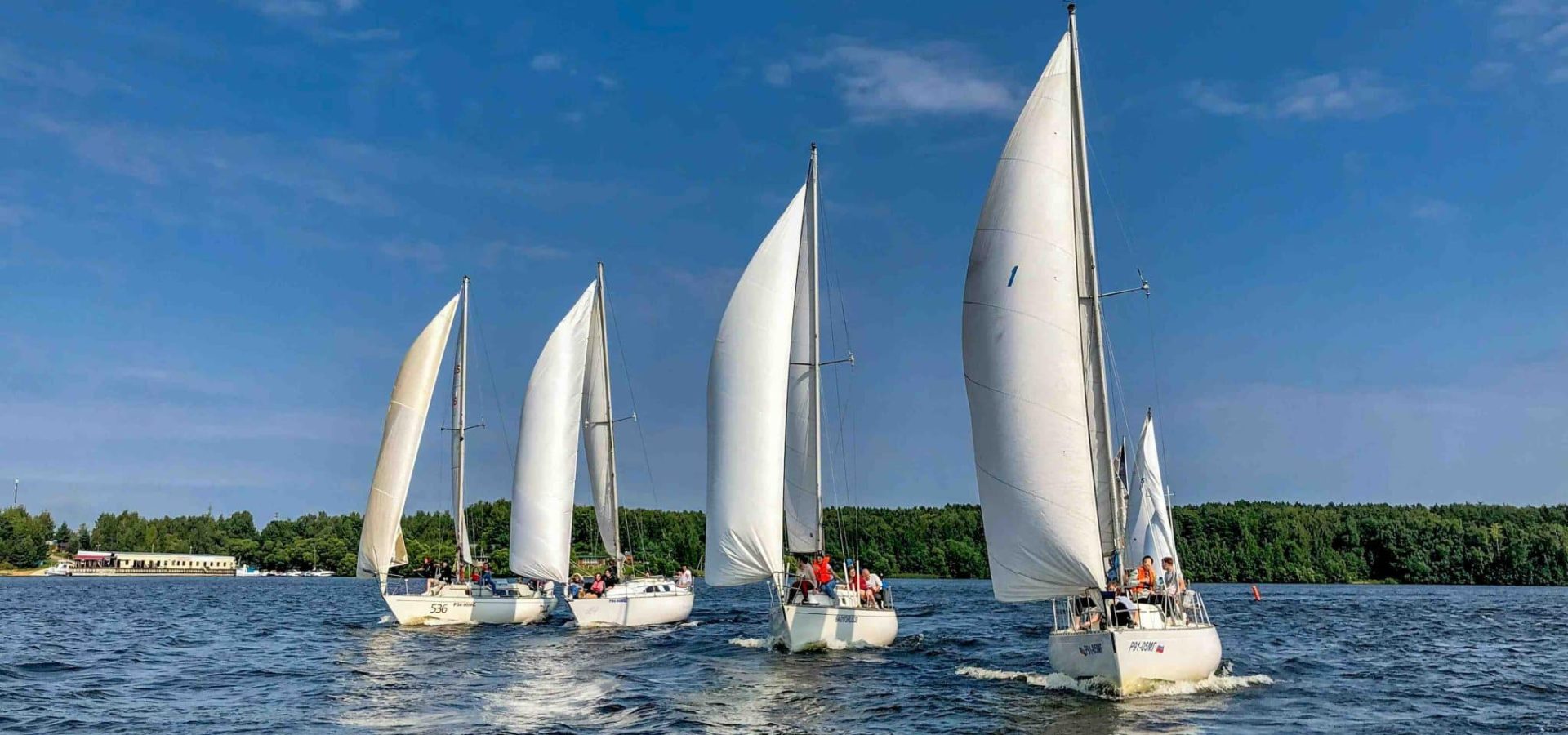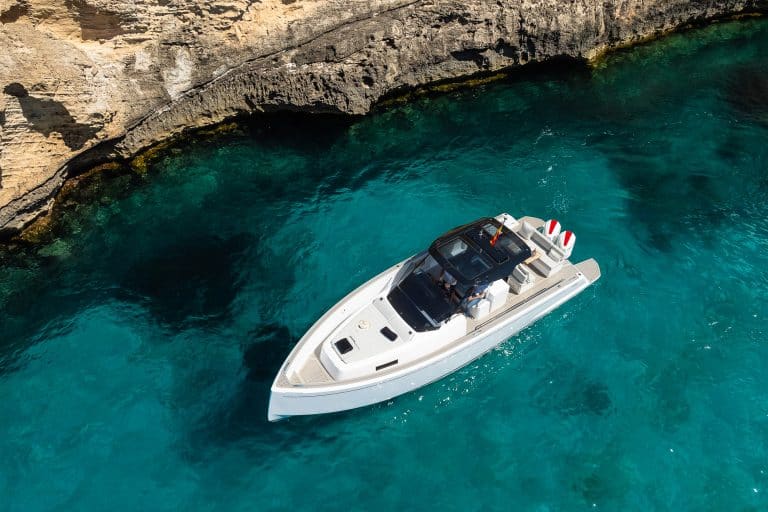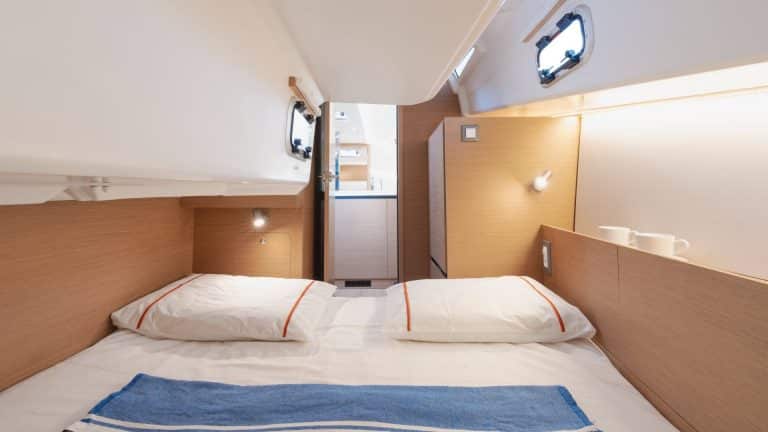Sails, since ancient times, have propelled vessels across the seas worldwide. Nowadays, navigation has advanced to the point where it is divided into two main branches: racing and cruising. Although they share the same aquatic environment, the sails used in each of them present notable differences. So, what are the differences between racing sails and cruising sails?
At Motyvel Group, we want to thoroughly explore these differences, unraveling the secrets behind racing and cruising sails. From material selection to design and technological innovation, we delve into a detailed analysis to understand how these differences impact the sailing experience and define the course of the journey. With over 35 years of sailing experience, we stand by our commitment to help you make informed decisions, whether you’re a sea enthusiast or just starting out in this exciting world.
Racing sail
The racing sail is a specialized tool meticulously designed for competing in nautical events, prioritizing performance and speed, one of the main mantras of racing sails. Generally constructed with advanced materials and cutting-edge techniques, these sails are the impressive and attractive result of the fusion between science and art.
Conceived to compete in diverse conditions, from light breezes to strong winds, these sails aim to achieve maximum performance in every phase of the regatta. The aerodynamic design and constant pursuit of weight reduction make them agile tools that respond effectively to wind variations. In this way, they become specialized instruments destined to win races and overcome challenges with maximum efficiency.
Cruising Sail
In contrast to those designed for racing, cruising sails are tailored to meet the practical and comfortable needs of sailors on long-distance journeys. These sails are characterized by their balanced approach between performance and durability. Additionally, cruising sails often have a more versatile design that allows navigation in a variety of courses and weather conditions.
Durability and maneuverability are fundamental pillars of cruising sails. Unlike racing sails, where aerodynamic efficiency is paramount, cruising sails aim to maintain their performance over time and in various situations. The robustness of materials and a more conservative design are combined to offer sails that respond to the demand for comfortable and safe navigation on cruising voyages.
8 differences between cruising sails and racing sails
As we’ve mentioned, sails are essential as they play a vital role in any maritime journey. At Motyvel Group, we explore how choices in design, weight, and handling not only impact navigation but also determine the interaction between the sailor and the ocean.
Before delving into detail, it’s important to highlight that choosing between racing and cruising sails is not just a technical matter. It’s a process that combines individual preferences with the inherent needs of each style of sailing. At Motyvel Group, our goal is to guide sailors in making these kinds of decisions that allow them to enjoy a deeper and more enriching connection with their passion for the sea.
Materials used
In racing sails, materials are chosen to maximize aerodynamic performance. Lightweight laminates with high-strength fibers such as Spectra or Dyneema are used, along with Mylar, to reduce elasticity and increase durability.
Racing sails are in constant evolution with technologies like 3Di sails and advanced materials, enhancing aerodynamics and performance. Innovations such as molded sails and fast-furling systems are transforming the racing scene, pushing speed to new limits.
In contrast, cruising sails tend to utilize Dacron, a heavier but durable polyester material. This material is suitable for longer voyages, where the priority is resilience and the ability to maintain shape over time. Although cruising sails prioritize durability, they also undergo innovations. Developments in hybrid materials and construction techniques are improving the weight-to-resistance ratio.
Construction
The construction of sails plays a crucial role in their performance and durability. In racing sails, the tri-radial layout and integration of technologies like 3Di sails offer precise control of shape and increased resistance to stretching.
On the other hand, cruising sails, typically built with crosscut or radial panels, aim for a more balanced approach. The sturdier construction ensures greater durability, allowing these sails to maintain their shape and effectiveness over extended voyages, even in adverse weather conditions.
Design and shape
Design directly influences how a sail responds to the wind and, consequently, the effectiveness of navigation. Racing sails’ design focuses on aerodynamic efficiency.
In racing sails, where speed is crucial, the design favors shapes that maximize speed at the expense of adaptability. Asymmetric sails with flatter shapes and more open leeches are common, optimized for specific wind conditions during races. In contrast, cruising sails tend to have more rounded shapes, allowing for balanced performance in various wind conditions. This more versatile design aims to address the needs of long-distance sailing and prioritizes balance. This adaptability ensures that the cruiser can face a wider range of scenarios without significantly compromising performance.
Weight
The weight of racing sails is minimized by using lightweight materials, which promotes greater speed. The lightness of these sails allows for quick maneuvers and agile changes of course.
In contrast, cruising sails, constructed with heavier materials, may be heavier. This additional weight translates to greater stability, facilitating slower and more comfortable maneuvers during long-distance voyages.
Handling
Efficient sail handling directly impacts the sailor’s experience. In races, the ability to maneuver lightweight sails quickly and precisely is essential for gaining positions. On the other hand, in cruising, where comfort and stability are priorities, the additional weight of the sails allows for a more relaxed navigation. Balanced handling ensures that the sailor can adapt to variable conditions and enjoy a more controlled and secure sailing experience.
Resistance
Racing sails are designed to perform in optimal conditions, but their durability may be compromised in extreme environments. The fineness of the materials, while providing speed, may result in less robustness in adverse situations. In contrast, cruising sails, built with a focus on durability, offer resistance to more varied conditions, providing the sailor with greater confidence in complex and tough voyages. For cruisers, durability is crucial during extended journeys. Cruising sails, made with more resilient materials, are designed to withstand prolonged wear and tear. Their ability to resist constant exposure to sun, salt, and strong winds ensures that these sails maintain their performance over time, making them ideal for long periods at sea.
Efficiency and performance
Racing sails stand out primarily for their specific performance in ideal wind conditions as their design and materials aim to maximize speed and efficiency in these situations. Meanwhile, cruising sails offer solid performance in a variety of conditions. Their versatility translates to effective navigation even when circumstances are not ideal, ensuring a predictable and comfortable experience.
Initial cost and sail maintenance
The long-term value depends on the preferences and needs of each sailor. Racing sails, with their focus on advanced materials, may have a higher initial cost. However, their maintenance often involves frequent replacements due to wear and tear during races. In contrast, cruising sails, although they may have a lower initial cost, are designed for a longer lifespan, which can result in lower expenses over time.
Conclusion
In the choice between racing and cruising sails, the key differences span from material and design to durability and performance. As we’ve seen, while racing sails aim for maximum speed under specific conditions, cruising sails excel in versatility and durability during extended voyages. The decision between racing and cruising sails should align with the sailor’s specific style and needs. Those seeking the thrill of speed and willing to invest in advanced technologies may opt for racing sails.
On the other hand, those who value durability, versatility, and a more balanced long-term cost may find cruising sails to be the right choice. At Motyvel Group, we’re here to assist you. Our experience in the nautical world makes us experts in sailing. Feel free to reach out to us if you have further questions about the most suitable type of sails for your activities at sea. We’ll be delighted to assist you.








